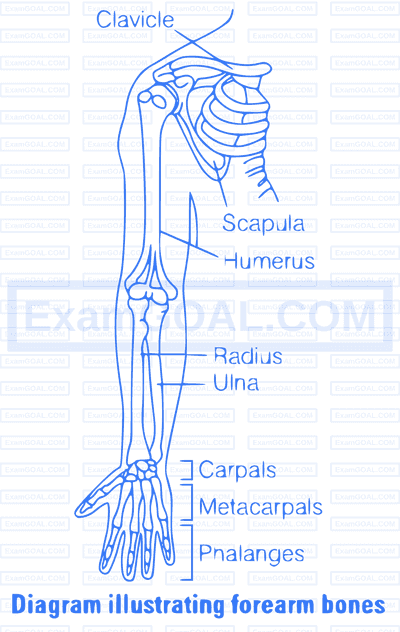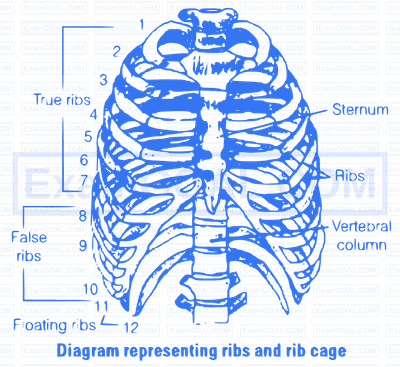Ball and socket joint are present between humerus and pectoral girdle. These joints allows free movement of bone in all direction. e.g., shoulder jointds (humerus bone in socket of pectoral girdle) and hip joints femur bone in socket pelvic girdle.

Our forearm is made of three different bones, i.e., humerus, radius and ulna. These bones can be seen in following figure

With respect to rib cage, explain the following
(a) bicephalic ribs (b) true ribs (c) floating ribs
(a) Bicephalic ribs, each ribs has two articulating surfaces on its dorsal end hence, are called as bicephalic ribs.
(b) True ribs are the first seven pairs of ribs Dorsally these ribs are attached to the thoracic vertebrae and ventrally connected to the sternum with the help of hyaline cartilage.
(c) Floating ribs are the last two pair (11th and 12th) of ribs and are not connected ventrally to the sternum therefore, called as floating ribs.
